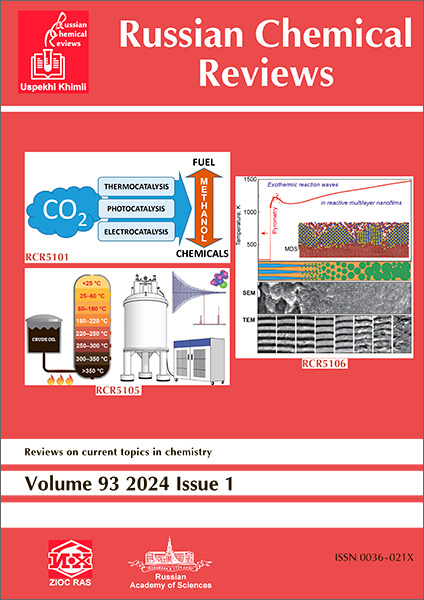g -四重核酸的配体
IF 6
2区 化学
Q1 CHEMISTRY, MULTIDISCIPLINARY
引用次数: 5
摘要
本文综述了近5年来g -四重体(G4)核酸低分子量配体的研究进展。讨论了这些配体的主要化学类别(多芳香族化合物、大环体系、金属配合物和杂环衍生物)。分析了配体的化学结构及其对四络合物稳定性的影响。对G4配体的设计和应用前景进行了展望。参考书目包括188篇参考文献。本文章由计算机程序翻译,如有差异,请以英文原文为准。
Ligands of G-quadruplex nucleic acids
The review summarizes advances in the development of low-molecular-weight ligands for G-quadruplex (G4) nucleic acid structures published in the past five years. Main chemical classes of these ligands (polyaromatic compounds, macrocyclic systems, metal complexes and heterocyclic derivatives) are considered. The chemical structures of the ligands and their influence on the stabilization of quadruplexes are analyzed. Future prospects of design of G4 ligands and their applications are discussed. The bibliography includes 188 references.
求助全文
通过发布文献求助,成功后即可免费获取论文全文。
去求助
来源期刊

Russian Chemical Reviews
化学-化学综合
CiteScore
13.00
自引率
5.20%
发文量
27
审稿时长
6-12 weeks
期刊介绍:
Russian Chemical Reviews serves as a complete translation of the esteemed monthly review journal Uspekhi Khimii, which has been a prominent figure in Russian scientific journals since its establishment in 1932. It offers comprehensive access to the advancements made by chemists from Russia and other former Soviet Union countries.
Established in 1932, Russian Chemical Reviews is committed to publishing timely and significant review articles encompassing various facets of modern chemistry, including chemical physics, physical chemistry, computational and theoretical chemistry, catalysis, coordination chemistry, analytical chemistry, organic, organometallic, and organoelement chemistry, chemistry of macromolecules, applied chemistry, biochemistry, bio-organic chemistry, biomolecular chemistry, medicinal chemistry, materials chemistry, nanochemistry, nanostructures, and environmental chemistry.
 求助内容:
求助内容: 应助结果提醒方式:
应助结果提醒方式:


